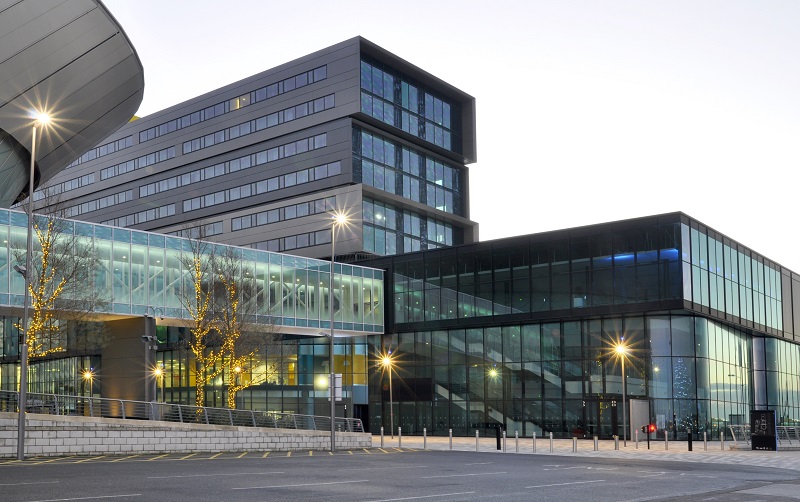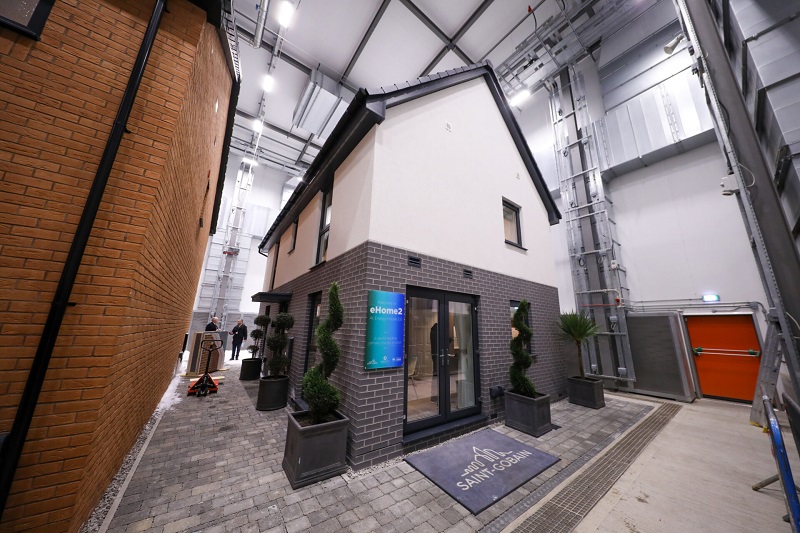Adrian Adams, Saint-Gobain Building Glass Commercial Market Manager, explains how the latest solar control glass can create visually stunning buildings with bright interiors, but without the heat or glare.
The comfort and well-being of occupants is often enhanced by maximising daylight, which is now considered fundamental to good design. This is achieved through the use of larger glazed areas in façades, atriums and roofs, and entire curtain wall systems, where the glass is a structural component of the building.
One of the most attractive reasons for designing-in large elevations of glass can, of course, also be one of its drawbacks. By allowing natural daylight into the building, the design process must address solar gain - the heating effects of sunlight during summer months which can create greenhouse-style overheating conditions if handled poorly.

How solar control glazing works
The secret to the performance of solar control glazing lies in the microscopically-thin coating that is applied to the glass substrate that forms the basis of these products. The coatings are applied to clear float glass under controlled conditions and consist of single, double or triple layers of silver.
The coating is positioned on the inside face of the outer pane of glass (face two) within a double or triple glazed unit and reflects the sun’s heat to reduce the amount entering the building, as well as reducing uncomfortable glare from sunlight. The coating delivers an optimum balance between the amount of light transmittance that penetrates the glass and the amount of solar heat that is reflected, the ratio of which is called its selectivity index.
Solar control plus thermal insulation and optimum daylight
The latest generation of solar control glass delivers higher levels of selectivity than ever before. SGG COOL-LITE XTREME 50/22 II for example has a selectivity of 2.24, which is the most selective triple silver product available in Europe – and comes with the added benefit of maintaining neutrality of colour. This also delivers another important aspect to the performance of the glass - its insulating capabilities.
Products such as the ones in the SGG COOL-LITE range deliver glass facades with a centre pane U-value as low as 1.0 W/m2K, whilst optimising the solar control performance. This ability to combine the solar control and insulating benefits into one glass product puts the performance of the façade at the heart of a building’s energy saving strategy. Never before has glass been able to perform to these types of high standard, and the boundaries continue to be pushed.
In terms of assessing how the energy consumption of a building can be minimised, the predictability of the way the glass coatings will perform over time, without degradation, provides a ‘fit-and-forget’ element.
Knowing that the glass will perform to a given level reflecting heat in summer months means mechanical engineers and building managers can focus their efforts on managing other issues, such as the heat generated as a result of building use and occupancy using other mechanical and passive cooling solutions. With the solar control glass doing its job efficiently – maintenance-free – the reliance on such cooling solutions is reduced and energy consumption cut as a result.
During colder months, the solar control glass aids thermal retention with its insulating properties. The low U-value of the glass gives architects the scope to use glazed facades as part of a highly insulated building envelope – and model the insulating qualities in exactly the same way as for roofing, floors and walls.
The energy saving benefit comes with reduced reliance on heating systems given that the glass reflects heat back into the building. It also ensures that cold spots are reduced close up to the façade, something that building occupiers will often notice in buildings featuring earlier generations of glass. This helps stabilise internal temperatures too, with fewer variations in performance to manage and take into account.
The product’s ability to harness good levels of light transmittance also means less reliance on artificial lighting during daytime hours which will help to significantly reduce energy consumption. This energy saving benefit is, of course, in addition to the health and well-being benefits associated with maximising natural daylight in the workplace, including reduced absenteeism and improved productivity.










